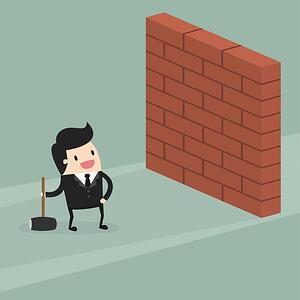How to Identify Efficiency Barriers in Your Eyecare Practice
Inefficiencies in an eyecare practice can disrupt and damage your patient workflow, your patient satisfaction, and your practice reputation. Today, patients expect to spend less time in the waiting room. Unfortunately, many practices are plagued by common barriers that impede the practice efficiency that your patients expect.
Below are tips on how to identify four efficiency barriers and how to overcome them.
4 Efficiency Barriers In Your Eyecare Practice
Cost Barriers
Holding tight to a budget is very important for small businesses, and cost for efficiency can be a big hurdle to get over. Many small business owners fall into the mantra of frugality, but there are times to exploit economies of scale that come with big purchases or outsourcing services which can be just as valuable as knowing when to bootstrap.
To overcome cost barriers that interrupt your ability to purchase resources that boost your practice efficiency, consider consolidating software vendors and compare your cost savings from an all-in-one solution.
Staff Barriers
We hear time and time again that managing staff is one of the biggest challenges for an eyecare practice owner. Between the high turnover rate, the expense of the team, and the time-consuming tasks of managing a team, you need to make sure that you have enough staff resources so that things aren’t falling through the cracks and that you have the tools and software in place to make their jobs as easy as possible.
Because of the seasonal spikes in the eyecare industry, it may not make sense for you to hire an additional full-time employee to cover busier months. For this reason, it may be a better option to outsource some of the roles to companies that offer scalable services for tasks like revenue cycle management for your optometric billing.
Process Barriers
Using paper processes in your practice can be a big barrier to creating efficiency throughout your workflow. Whether you’re using paper for claim filing, pre-appointment paperwork, or even paper records, there are more efficient and automated ways to record information that will streamline the patient flow throughout your office.
Evaluate your workflow to find bottlenecks that can be solved with the right piece of technology.
Communication Barriers
Communication barriers can affect your efficiency in two ways – communicate between staff and communication with patients. Communication with staff is most important to keep the patient flow running quickly so that patients aren’t waiting long for the OD during the appointment. Another big communication barrier among staff can occur with the transfer of insurance benefit knowledge. Benefits should be pulled prior to the appointment and communicated clearly with the doc so when discussing coverage and services with the patient during the exam they know exactly what is covered and what isn’t.
Communication with patients is important for patient growth and satisfaction. Whether it’s how your patients are able to schedule appointments with your practice or how they access follow up information after they leave your office, communication is key to maintaining happy patients.
Increase the communication between your practice and your patients by giving your patients access to a secure portal where they can message your staff, schedule their appointments, and view diagnosis-based patient education material on their own time.
For more tips on how you can make your practice more efficient, download a copy of, 10 Easy Ways to Restore Practice Efficiency.

